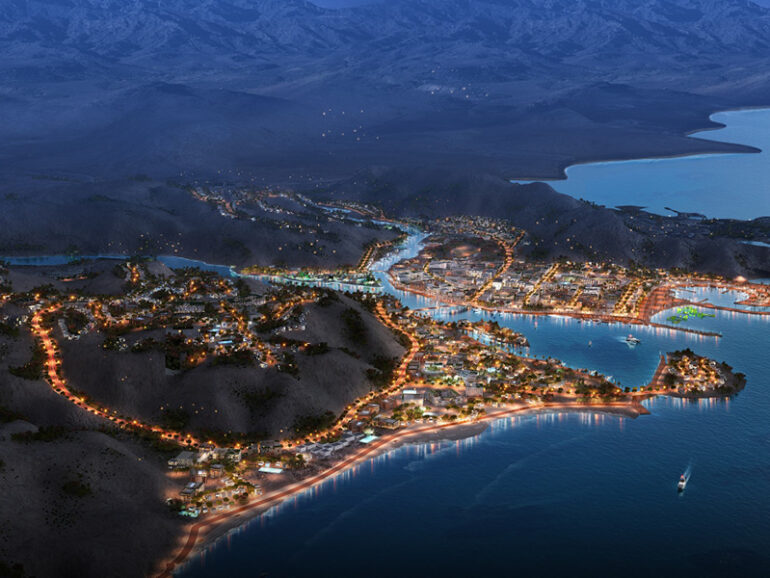With a vision to transform the tourism and real estate sector in the sultanate in accordance with Oman Vision 2040, Oman Tourism Development Company (Omran Group) has revealed the masterplan and brand identity of ‘Yiti’ – one of the largest integrated tourism developments in Oman.
The new master-planned development sets a new model for urbanisation, as it connects and extends the city of Muscat, enriching its offerings and possibilities, through a multi-phased expansion approach.
Spanning over 11 million sq m, the Yiti Development is a massive venture, strategically located overlooking the Sea of Oman. The masterplan of the development is designed according to placemaking principles that ensure the establishment of innovative standards in urban development and architecture, as well as the activation of valleys, plateaus and coasts that harmonise within the topography of the site.
The Yiti development will be spread over four phases, offering a plethora of opportunities for domestic and foreign direct investments alike.
This four-phased development approach takes into consideration the accessibility to infrastructure, connection to main roads and ease of development as well as to promote an organic expansion.
Putting sustainability at the heart of its vision, the development’s master plan places a huge importance on the creation of a well-balanced integrated mixed use residential and resort-oriented community that will include various components, such as tourism, commercial and business spaces as well as residential areas.
In addition to leisure and entertainment attractions, educational and health facilities. The masterplan envisions inclusivity for the people through diverse and open-to-all public and community facilities.
On the landmark development, Group CEO Hashil Bin Obaid Al Mahrouqi said: “At Omran Group, we take immense pride in our developments. The Yiti Development masterplan is an epitome of progression, embodying components complementing each other, and based on a vision of balanced land use and urban design as key elements of its ethos.”
“We have consciously created a development plan that will be executed through holistic partnerships with world class expertise. It is anticipated to create a modern integrated urban hub that sets new and improved urban planning standards for future developments in Oman and the region,” he stated.
“This integrated development in the sultanate, brings with it multi-fold opportunities for potential investors from across the region and the globe to be associated with it,” he added.
Elaborating, Al Mahrouqi said: “Guided by Oman Investment Authority’s direction in realising the ambitious goals of Oman Vision 2040 and supporting the delivery of the National Tourism Strategy, this iconic development will be a benchmark of integrated tourism developments in the country.”
“The Yiti Development Master Plan is a multi-tiered, sustainable model that will continue to contribute to the nation’s economy. The scale of the development will directly contribute to the socio-economic development of the Sultanate and position Yiti as a unique destination that offers a mix of tourist, cultural and real estate offering in the future,” he added.
With the sultanate’s economic diversification plans in full swing, the Yiti Development will play a pivotal role in increasing the tourism sector’s contribution to the nation’s GDP.
With the backing of a revered brand like Omran Group, it will also provide promising investment opportunities for international investors which will inject fresh capital into the market by means of foreign direct investments, stated Al Mahrouqi.
According to him, local community development will be a key focus for the Yiti development by enabling and providing ample business opportunities for local companies, SMEs, giving them the exposure to work with global industry firms.
In line with the Omani group’s in-country value programme, Yiti development will generate direct and indirect employment opportunities for Omani youth and create sustainable commercial benefits for the sultanate.
In addition, it will stimulate the local market through the procurement of local goods and services, enhancing the capabilities of the local workforce and increasing productivity in the country.


